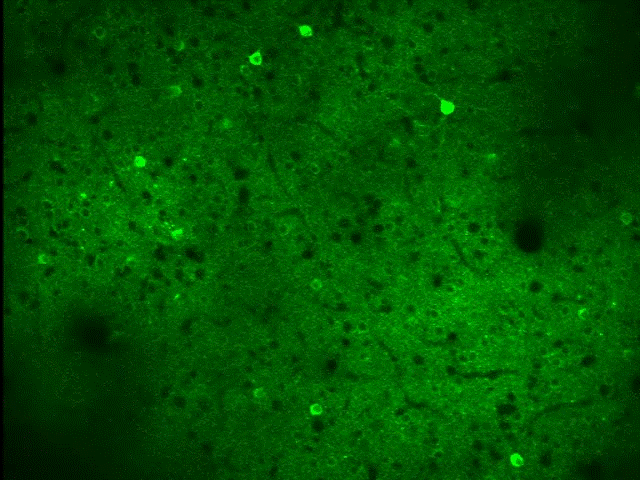[ Source: MIT News | July 10th, 2019 ]
Neurons “speak” in patterns of electrical spikes that neuroscientists can tap to literally read animal and even human minds. But their methods for doing so are imperfect.
Poking electrodes into tissue is direct but it’s invasive and doesn’t reveal which cell has been sensed. Engineering neurons to flash with light when calcium levels peak is less invasive and shows the exact cell that’s spiking, but it’s an indirect indicator of electrical activity and quickly becomes muddled when flashes overlap. To improve how well the timing of spikes can be estimated from flashes, researchers at IIT Madras and MIT have developed a powerful algorithm with inspiration from the analysis of speech and music.
As reported recently in a paper in IEEE Transactions on Signal Processing, the team shows that the algorithm, called GDspike, often performs better than some other popular methods. Its greatest power, however, appears to be that when used in combination with a particularly successful model-based method called MLspike, it can improve analysis even more.
“GDspike performs reasonably well,” said co-senior author Mriganka Sur, Newton Professor of Neuroscience in MIT’s Picower Institute for Learning and Memory. “But in particular when you use modeling and then apply this on top of it, it performs really well. That is one of best ways to deconvolve signals to date.”
Sur ‘s neuroscience lab constantly uses calcium fluorescence to track neural activity, for instance to study how neurons in different brain regions communicate to guide behavior. That’s put him on the front lines of the problem of estimating spike patterns. Since working with the team of co-senior author Hema Murthy, Professor of Computer Science at IIT Madras, to develop GDspike, he said, he has begun combining it with MLspike to improve his lab’s analysis of experimental data.
Though more work should be done to further validate GDspike’s value, Sur said, he believes other neuroscientists will consider using it, too.
“We hope that, over time, this will be accepted by the field,” he said. “Neurophysiologists are very opportunistic. If something works very well they will use it, so the onus is on us.”
Murthy added that the algorithm may also prove useful in guiding machine learning approaches to spike estimation and similar problems by aiding in the detection of spike events. That, in turn, could make machine learning much more efficient.
“Signal processing can direct machine learning,” she said. “The experiments with the Sur Lab convince us that appropriate signal processing can be used in tandem with machine learning algorithms thus leading to significant savings in power.”
